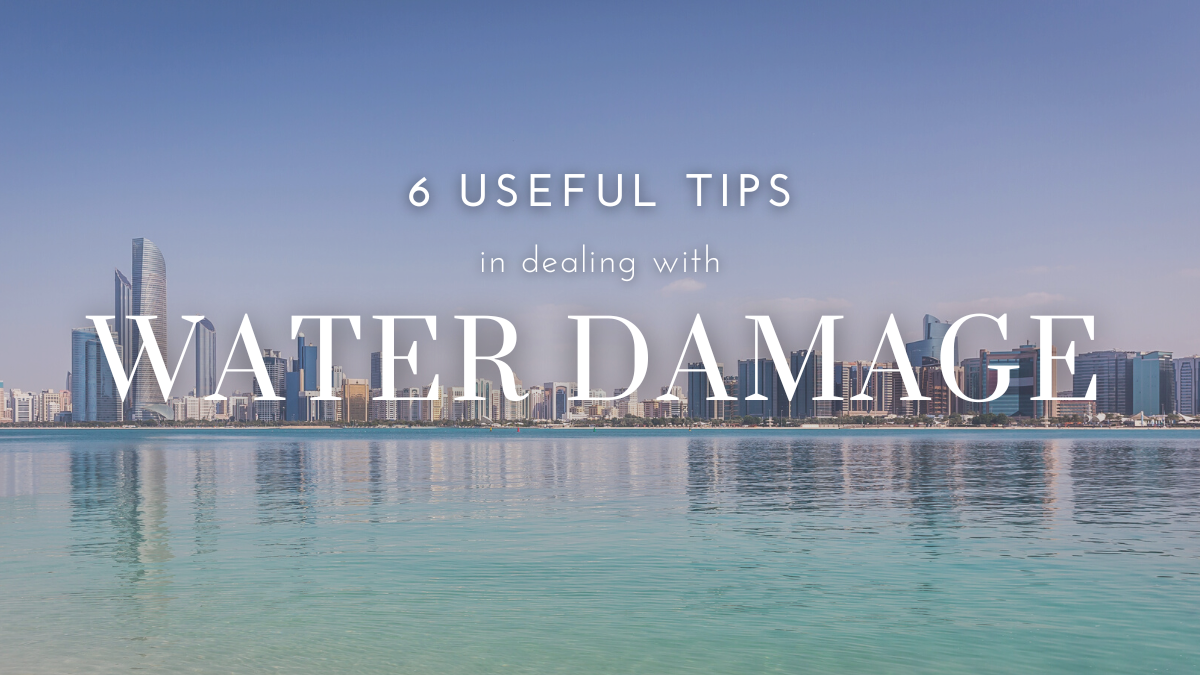A single essential piece of advice that a newcomer to digital marketing receives is to steer clear of duplicate content on SEO. Experts have concluded that this is the main element in reducing the page’s rank within search result pages. However, the reality is contrary to the notion. Sometimes, it is discovered that it’s still possible to borrow a specific amount of materials. Let’s look at how this is working and how it affects SEO where it originates from and what you can do about it.
What Is Duplicate Content?
Content that is duplicated appears on several websites. This is usually the case if identical content has been posted on several websites using different domain names. However, the dispersion of duplicate content across multiple pages on the same resource could affect the efficiency of your SEO strategy.
Texts that are duplicated and filled with keywords could be extremely harmful. But, you could be in a troublesome situation due to the huge borrowing of videos and images.
We communicate using the same language, writers have similar concepts, and the original films could contain clips from different films. Additionally, various pages on the website often contain contact information and legal conditions of service that can’t be altered. Therefore, we must tackle a certain number of duplicates.
What is the amount of unique content on a website’s page? Search engines can’t provide an exact answer, but experts have different estimates. Tony Wright, a reputable writer for Search Engine Journal, gives one of the most accurate estimates. According to Tony Wright, a website should be a minimum of 30% content that can’t be found in other places. This applies both to other pages within the website and also to other domains.
Do you think it’s simple? No, not at all. It is important to remember that certain information is duplicated throughout the site. They include subheadings, contacts, and navigation menus. They comprise up to 20 percent of the overall page content. In addition, many resources reference other websites. Online stores too can receive Content Marketing Strategy messages from manufacturers. Furthermore, a certain proportion of texts can be snatched up accidentally, because the authors are using the same source for information. Additionally, this percentage grows since new competitors always appear in your segment.
So even with a meticulous approach to managing content, the percentage of duplicate content can range from 25 to 50 percent. Thus, you’ll have to constantly monitor the content quality of your website’s content. You must hire copywriters or develop multimedia elements. make changes to pages and add new content regularly. There is no way to stop this procedure. If you do, you could lose your control over the scenario.
Why Does Content Duplication Matter?
Imagine that you visit the supermarket and you see two similar products from different companies which are nearly identical in price. Which is superior? Which one should you purchase? The choice of this kind leads people to a dead stop. Most of the time people will reject both options and seek out a different option. This is precisely what they do when they find duplicate content.
If pages on two sources are duplicates The crawler will not look for the page that was originally found. It will just divide the points awarded in terms of authority, link-building, and academic value. Therefore, duplicates will be given an inferior ranking and get lower SERP positions. If the situation is triggered by other violations, the situation could even result in refusing to index, however, such decisions are not often implemented in the real world.
Of course, Google, Bing, and their rivals monitor more than just the content on websites. But, it could create a situation in which borrowed material gets more prominence. This occurs when rivals have better technical optimization. Thus, securing your Web in search of duplicate information is an essential part of new life for the Content Creator of a resource.
How Does Duplicate Content Impact SEO?
The drop in search engine rankings is a long-term effect that you can achieve when you ignore the issue for a prolonged period. However, duplicate content issues may be detected in a matter of minutes. Let’s look at these issues in greater detail.
Burns Crawl Budget
The term “time” is the time Google needs to take to index websites. If the site has a large number of pages, and even duplicate content and duplicate content, Google may not be able to index the most important areas. To correct this issue you must manually stop duplicate indexing, and then wait for the next process for the site. While waiting you might be unable to maintain your rankings, visitors as well as your profits.
Fewer Indexed Pages
It is not often, however, sometimes a penalty for duplicate content results in the removal of the page from search engines. The implications are obvious. It’s a big loss to a business that has been successful. You can correct the issue by re-indexing your content or contesting the decision. In any event you’ll have to devote a significant amount of time and effort to keep an eye on another indexing.
Backlink Dilution
When a search engine finds many identical pages and is unable to determine which is the primary search result, it splits the points of ranking among all of the competitors. That means the network of links from outside that you’ve been working on for some time will work in your favor and for the benefit of rivals. It is a fact that this is not the most pleasing scenario. It is comparable to industrial espionage, where other businesses receive your trade secrets at no cost.
Decreased Organic Traffic
This is the result of the earlier issues. If you continue to ignore problems with duplicate content, the lower the search engine ranking, and the fewer people will be able to find your website. This is why it’s crucial to discover and correct SEO issues as quickly as you can.
Main Causes of Duplicate Content Issues
It’s all quite clear this time. Someone has made an identical website to gain from the popularity of a rival and earn immediate profits. However, in actual practice, it isn’t that easy. In addition, there are technical reasons that might not be apparent to an SEO expert for a long period.
Scraped or Copied Content
If you have an individual blog it’s very easy to manage the content. It’s a more challenging task for commercial websites. For instance, the majority of online stores automatically analyze the product’s characteristics from the websites of manufacturers. Marketing agencies can replicate offerings from third-party vendors or business partners without modification. This is the most frequent cause of duplicate content.
HTTP Vs. WWW or HTTPS. Non-WWW Web Pages
It is considered to be an indication of good ways to have a website that uses the secure HTTPS protocol but does not include a WWW prefix. But, this isn’t the case for new websites. The older sites usually contain HTTP as well as WWW versions, as well as the standard versions. If they are completely duplicated content and are indexable through search engines this will hinder the SEO strategy’s efficiency.
Content Syndication
Some websites focus on reposts. They draw users by bringing together all the relevant information about the subject in one location. While doing so they build a network of links to improve their SEO rankings. However, blindly duplicating websites could result in severe penalizations from Google. Thus, content syndication should be left to only reliable partners.
URL Variations
Users can visit the same webpage using different URLs on numerous websites. For instance, they may access it through external resources or by using filters within the online store catalog or through an affiliate link. This happens when you utilize a standard CMS. It makes navigation easier, but it also poses risky situations.
Order of Parameters
This issue is a result of the problem that was mentioned earlier. Certain CMSs do not keep track of how a page is chosen in the navigation menu or catalog. Therefore, you could get the exact content by using the /?size=500&color=3 or the filters /?color=&3size=500. Search engines will be able to index both versions and identify duplicates.
Paginated Comments
Popular products and articles are flooded with thousands of feedback. The idea of displaying them all on the same page is not the best Content Idea from the point perspective of technical optimization. In this scenario, the site will be slow. The majority of CMSs use pagination functions which allows the separation of comments into multiple pages. However, this feature produces multiple variants of the URL that vary only on the content.
Mobile-friendly and AMP URLs
Duplicate content on Google is often seen when optimizing websites for tablets and smartphones. Alternative pages are designed for them, and they are also indexable. In addition, they’re almost identical to desktop versions.
Attachment Image URLs
WordPress and other CMSs with a large following make a separate page for uploading images by default. The page has any SEO value, but it can platform for content creators the possibility of duplicate content, which can less website ranking. To prevent this from happening you must include a link to the original site for the photo.
Tag and Category Pages
These terms are commonly employed to search websites, blogs as well as other sites. However, it is important to be careful when arranging your website. Categories and tags that have a similar meaning could be identified for duplicate content. Similar to limited filtering. If only one item is included in a category or tag that is duplicated, it will be added to the webpage of the article or the product’s information card.
Print-friendly URLs
This kind of duplicate content on SEO is typically found in catalogs online, libraries as well as legal firm sites. To improve UX and user experience, they quickly prepare documents to print. This creates a duplicate page that differs only in the format, but not in the content.
Case-sensitive URLs
This is a problem that’s not easily diagnosed. The key is that Google differentiates between lowercase and uppercase letters on links. If your site provides the same answer to search queries that use different spellings Google will be able to distinguish between duplicate pages.
Session IDs
Most online stores use these. They store a temporary history of user activities such as shopping or looking at products. The system typically makes use of cookies. Some CMSs however, create new URLs automatically and can duplicate content an infinite amount of times.
Parameters for Filtering
It is important to know the origins of your user. This will allow you to create the most effective sales funnel and design the most effective Content Commerce pitch. However, adding parameters to filtering URLs results in the creation of unfriendly hyperlinks to the same page which can be crawled in search engine results.
Trailing Slashes in contrast to. Non-trailing-slashes
In the past, a link that ends with “/” provides access to a folder, but it does not provide access to an individual web page. This is no longer the case nowadays. However, search engines take links without and with trailing slashes as distinct pages.
Index Pages (index.html, Index.php)
It is crucial for the proper functioning of the website as well as the proper processing of hyperlinks through search engines. But, it’s not always visible as the primary URL. It creates duplicate pages and creates clones of content within a single resource.
Indexable Staging/Testing Environment
The updating of websites and the introduction of new functions are usually performed in real-time. By putting test pages on your server, you will be able to check them live. Be sure to delete previous versions or block them from indexing in search engines. In the event of a lack of attention, it is possible to leave new pages with no organic traffic.
How to Find Duplicate Content on a Website
A manual search isn’t the most efficient method. Even if you are aware of the definition of duplicate content and why it happens there is a chance that you will be unable to spot small technical problems. If you have a lot of web pages on your website this is Mission Impossible.
The best choice is to utilize tools for a complete SEO audit. There are the following tools:
- MOZ
- SEMRush
- Serpstat
- Sitechecker
- Ahrefs
It is important to be aware that these are tools paid for. The cost of a basic subscription is $50-$100 per month. But, they’ll give you plenty of helpful features, such as search engine optimization linking management, keyword research, and audits of technical quality.
To locate identical content elsewhere on the Web to find similar content, you can utilize free plagiarism-checking AI Tools for Content Creation. They include, for instance, Copywritely, Copyscape, and Grammarly. In their simplest versions, they provide the option of a limited number of tests. To expand the number of checks, and also to enable the continuous monitoring feature you’ll need to join a subscription that is paid.
Common Website Duplicate Content Solutions
Of course, it is important to consider each situation. Sometimes, two similar problems may be different in aspects. But, here are some ways to eliminate the majority of duplicate content.
301 Redirect
It’s less complicated than restructuring and is more effective than other approaches. If there is duplicate content on your site because of having HTTP as well as HTTPS versions along with pages without and with any WWW-related prefixes, then you must redirect traffic to the proper page. When crawlers encounter this code, they’ll follow the link and will index only the content you have specified to them.
Rel=”canonical”
It directs users to the page that has its original content. It instructs search engine bots to ignore any duplicates on the same page even printed versions and mobile devices that were created during the process of development and testing. Google representatives have repeatedly stated that 301 redirects as well as the use of the Canonical Tag are two of the most efficient ways to manage to control the search engine indexing for your web pages.
Meta Robots Noindex
When a search engine is aware of that tag, the search engine will block the page. But keep in mind that the search engine is still able to access the hyperlinks on the page if you’ve not removed this feature. This feature lets you stop several problematic pages from your site. But don’t be too excited about this method. Google engineers have stated that it boosts the speed of response for the site and also the time it takes to crawl.
Preferred Domain and Parameter Handling in Google Search Console
Log in to the service, choose the project, and then go to the settings for your site. Choose the domain that you want to index. For example, you could choose to ignore HTTP versions or WWW versions of pages. The app previously allowed you to define the individual settings for crawling for every URL. The feature ended in 2022. The downside of this method is that it gives the command for Google crawlers. Other methods will continue to index the pages you have duplicate content.
Consolidating Pages
For instance, you may have published a series of posts with similar, but not identical, content. Because of its lack of quality, it is unlikely to be highly ranked in the search results. To remedy this it is simply to combine all pages into one. Create a single text, and include unique theses from each article. The rest of the text can be highlighted or filtered to search crawlers. In the end, your website’s rank in the SERP will increase dramatically.
Duplicate Content – How Harmful Is It?
However you define it, no web page will be unique. So the search engines are committed to the existence of the same content across different areas of the site. To a certain extent. If you have a resource that has pages that duplicate each other with a high percentage of you have borrowed content from your competition then you’ll face problems. In the beginning, it could cause a ranking as well as an organic traffic decline. By ignoring the warnings and pursuing this risky practice Your website could be wiped out of indexing for search results.
So, it is important to resolve the issue as quickly as you can. To identify the issue quickly then you must employ the universal SEO auditing services or specific tools. Most times the most popular solution to duplicate content is the answer. They include tags, redirects, and commands to crawlers. If none of this helps then you need to alter the content, by requesting copywriting or developing multimedia elements.
FAQ
What Is Duplicate Content?
It is the multimedia content or text that appears on other pages on the same website or on other domains on the Web.
Is Duplicate Content Harmful?
Experts suggest that between 30 and 60% of original content is considered to be normal, based on specific circumstances. The only exception is large text fragments or a large number of images taken from other sources will cause harm.
Does Google Have a Duplicate Content Penalty?
The search engine doesn’t put in place any restrictions directly. If, however, there are multiple versions of the same page It automatically splits the ranking points among them, which lowers their rankings. Google seldom refuses to index your web pages. It usually happens in the event of multiple violations of the guidelines.
What Is the Most Common Fix for Duplicate Content?
You can determine the source page by using its Rel=”canonical” tag. You can set automated redirects to prevent indexing of content that is not unique and consolidate content. You can also select the appropriate domain from Google Search Console.
Read more:









